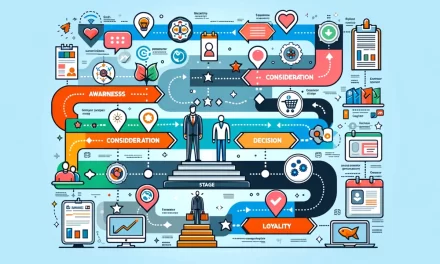Introduction to Interactive Marketing
In today’s rapidly evolving digital landscape, interactive marketing has emerged as a game-changer, especially for coaches venturing into the online world. Unlike traditional marketing methods, interactive marketing strategies focus on a two-way conversation with the audience, making it a dynamic and engaging approach.
The essence of digital interactive campaigns lies in their ability to involve the audience actively. This involvement isn’t just about catching their eye; it’s about starting a dialogue and creating a connection. For coaches, this is crucial. Whether you’re coaching in health, business, personal development, or another field, establishing a connection with your audience is essential for building trust and credibility.
Interactive marketing goes beyond mere advertising; it’s about creating experiences that resonate with your target audience. By engaging in interactive marketing, coaches can gain valuable insights into their audience’s preferences, opinions, and needs. This data is gold in tailoring your offerings and messages to suit their interests.
Moreover, the interactive aspect of digital marketing isn’t limited to high-tech solutions. It encompasses a range of strategies from interactive content, like quizzes and polls, to engaging through social media stories or live sessions. These techniques not only enhance audience engagement but also make your marketing efforts more memorable and effective.
As a coach new to the digital marketing sphere, embracing interactive marketing methods can be a significant first step towards building a robust online presence. It’s an opportunity to move from monologue to dialogue, from broadcasting to engaging, and most importantly, from being just another coach online to becoming an interactive, approachable, and trusted coach in your niche.
Understanding Your Audience: The First Step to Engagement
The cornerstone of any successful interactive marketing strategy, particularly for coaches new to digital marketing, is a deep understanding of your audience. Grasping who your audience is, what they need, and how they prefer to engage, forms the basis of any engaging audience techniques you’ll employ.
To start, create a detailed audience persona. This involves more than just demographics. Dive into the psychographics: What motivates your audience? What are their challenges and aspirations? For instance, if you’re a life coach, your audience might be individuals seeking personal growth and balance. Understanding these nuances allows you to tailor your content and interaction more effectively.
Utilizing tools like surveys, social media polls, and feedback forms can provide invaluable insights into your audience’s preferences. These user engagement best practices not only help in gathering data but also engage your audience by making them feel heard and valued. For example, a health coach might use a poll to determine what health topics their audience is most interested in.
In the digital age, data analytics tools can offer an in-depth look at audience behavior. Analyze which of your online contents are getting the most interaction, what times your audience is most active, and through which channels they engage the most. This data becomes crucial in planning your interactive marketing campaigns.
Remember, each interaction with your audience is an opportunity to learn more about them. Whether it’s a comment on a blog post or a question during a webinar, every piece of feedback is a piece of the puzzle in understanding your audience.
For coaches, this understanding isn’t just about selling a service; it’s about creating a connection. When your audience feels understood, they are more likely to engage, trust, and eventually, convert into loyal clients. This connection is the ultimate goal of effective audience engagement, and it starts with knowing who you’re talking to.
The Role of Personalization in Interactive Marketing
Personalization sits at the heart of effective interactive marketing. For coaches, especially those new to digital marketing, personalizing content and interactions can significantly enhance audience engagement. Personalization means tailoring your marketing efforts to meet the unique needs, preferences, and interests of your audience.
In the world of coaching, where building a personal connection is paramount, personalized marketing solutions can be a game-changer. For example, a career coach might send customized email newsletters with career tips and opportunities relevant to the specific industries their subscribers are interested in. This level of personalization demonstrates to your audience that you understand and care about their individual needs and goals.
The power of personalization also extends to the creation of interactive content. Whether it’s a personalized quiz to help clients determine their coaching needs or an interactive webinar addressing specific audience questions, these innovative marketing methods make your audience feel valued and seen. Personalized interactions are more likely to resonate with your audience, fostering a sense of community and trust.
Moreover, technology has made personalization easier and more effective. Utilizing data from audience interactions on your website, social media, or email campaigns allows you to segment your audience and tailor your content accordingly. This approach not only boosts engagement but also increases the chances of converting your audience into clients.
For coaches stepping into the digital realm, embracing personalization in your interactive marketing strategies can set you apart. It shows your commitment to not just reaching your audience, but truly connecting with them on a personal level.
Utilizing Interactive Content to Engage Your Audience
Interactive content is a cornerstone of engaging digital campaigns, especially for coaches looking to make a mark in the digital marketing world. By integrating interactive elements into your content, you can significantly boost audience engagement and make your brand more memorable.
One effective form of interactive content is quizzes and assessments. For instance, a fitness coach might offer an online quiz to help users determine their fitness level or the best workout plan for them. These tools not only provide value to the user but also encourage them to interact with your brand, increasing engagement and the likelihood of conversion.
Another powerful tool is interactive videos. Videos are already a highly engaging medium, but by adding interactive elements like clickable links, quizzes, or branching scenarios, you can transform passive viewers into active participants. For example, a business coach could create an interactive video course with decision points that allow viewers to choose their own learning path. This type of content not only educates but also entertains and engages, making your brand stand out.
Interactive webinars and live Q&A sessions are also great for real-time engagement. They provide an opportunity for your audience to interact directly with you, ask questions, and provide feedback. This real-time interaction fosters a sense of community and can be invaluable in building trust and authority as a coach.
Social media stories and polls are another way to engage your audience. Platforms like Instagram and Facebook allow you to create interactive stories where viewers can vote in polls, answer questions, or engage in other interactive elements. This not only boosts engagement but also provides valuable insights into your audience’s preferences.
Lastly, gamification can be an innovative marketing method to boost engagement. Incorporating game-like elements such as points, badges, or leaderboards into your coaching services can make the learning process more fun and engaging. For example, a language coach might use a points system where students earn points for completing lessons or challenges, adding an element of competition and fun to the learning process.
Incorporating these types of interactive content into your marketing strategy not only enhances audience engagement but also differentiates your brand in a crowded digital space. For coaches, utilizing interactive content is a dynamic way to connect with your audience, providing them with a valuable, memorable experience.
Interactive Tools and Platforms for Coaches
For coaches diving into the realm of digital marketing, leveraging the right interactive tools and platforms is crucial. These tools not only facilitate effective engagement with your audience but also streamline your marketing efforts, making them more efficient and impactful.
One of the most essential tools for interactive marketing is a robust Customer Relationship Management (CRM) system. CRMs like Salesforce or HubSpot offer coaches a comprehensive platform to track interactions with clients, manage leads, and personalize communication. By using a CRM, you can ensure that your interactions are tailored and timely, which is key in building lasting relationships.
Social media platforms also play a pivotal role in interactive marketing. Platforms such as Instagram, Facebook, and LinkedIn offer various interactive features like live videos, stories, and polls. These features allow coaches to engage with their audience in real-time, providing a space for direct communication and feedback. For instance, hosting a live Q&A session on Instagram can be a great way to engage with potential clients and answer their questions on the spot.
Webinar tools like Zoom or Webex are invaluable for coaches looking to conduct online workshops or training sessions. These platforms offer features like screen sharing, breakout rooms, and interactive polls, making your sessions more engaging and interactive. A financial coach, for example, could host a webinar on budgeting and use these features to interact with attendees, making the session more dynamic and informative.
Email marketing platforms such as Mailchimp or Constant Contact are excellent for personalized and targeted communication. These platforms allow you to segment your audience and send customized content, ensuring that your emails resonate with the recipient. For a wellness coach, sending personalized email newsletters with health tips and updates can be a powerful way to stay connected with their audience.
Lastly, blogging platforms like WordPress offer an opportunity to create interactive content through blog posts, comments, and forums. A life coach, for example, can use a blog to share insights and encourage discussions, fostering a community around their brand.
These interactive tools and platforms provide a variety of ways for coaches to connect with their audience, offering both the flexibility and functionality needed to create meaningful and engaging marketing campaigns.
Case Studies: Successful Interactive Marketing Campaigns
Interactive marketing has been successfully implemented by various coaches and brands, demonstrating its effectiveness in engaging audiences. Here are a couple of case studies showcasing successful interactive marketing campaigns:
1. Health Coach Instagram Challenge
A health coach specializing in holistic wellness launched a 30-day Instagram challenge, inviting followers to participate in daily health activities. Each day, participants were encouraged to post photos of their meals, workout routines, or mindfulness practices using a specific hashtag. The coach interactively engaged with the posts, offering personalized tips and encouragement. This campaign not only increased the coach’s Instagram following but also fostered a strong, interactive community. Participants felt personally connected to the coach, leading to an increase in client consultations and program sign-ups.
2. Business Coaching Webinar Series with Interactive Tools
A business coach organized a series of free webinars targeting small business owners. To enhance engagement, the coach used interactive polls, Q&A sessions, and real-time strategy workshops within the webinar. Attendees were able to submit their business questions and get instant feedback. Post-webinar, the coach provided personalized follow-up emails with additional resources and special offers for coaching services. This approach resulted in a significant increase in new clients and heightened brand recognition in the business coaching community.
3. Life Coach’s Interactive Video Course
A life coach created an interactive video course on personal development, featuring branching scenarios where viewers could choose different paths based on their interests and challenges. The course also included interactive exercises and self-assessment quizzes. This format allowed participants to have a personalized course experience, leading to higher engagement and completion rates. The course received excellent feedback and led to a surge in the coach’s online course sales.
These examples illustrate the power of interactive marketing in building relationships, engaging audiences, and ultimately driving business growth. By implementing similar strategies, coaches can create more impactful and successful marketing campaigns, connecting with their audience on a deeper level.
Measuring the Success of Your Interactive Marketing Efforts
Evaluating the effectiveness of your interactive marketing strategies is crucial in understanding what resonates with your audience and refining future efforts. Key metrics to track include engagement rates (likes, comments, shares), conversion rates, website traffic, and audience growth on social media platforms. Tools like Google Analytics for website analysis and social media insights for platform-specific engagement are invaluable in this process.
For instance, if you’re a coach who recently hosted a webinar, measure its success by the number of attendees, the engagement during the session (questions asked, polls answered), and the follow-up actions taken by participants (sign-ups, downloads, inquiries). Similarly, for an interactive social media campaign, track the increase in followers, the engagement on posts, and direct messages received.
Regularly monitoring these metrics allows you to understand your audience’s preferences and behaviors, enabling you to fine-tune your interactive marketing strategies for maximum impact and efficiency.
Best Practices for Interactive Marketing
To maximize the effectiveness of interactive marketing, coaches should adhere to these best practices: Firstly, always keep your audience’s interests and needs at the forefront. Tailor your content to be relevant and valuable to them. Secondly, encourage active participation by asking questions, creating polls, and inviting feedback. This interaction fosters a sense of community and belonging. Thirdly, consistently analyze and adjust your strategies based on audience feedback and data insights. Finally, maintain authenticity in all your interactions. Genuine engagement builds trust and establishes you as a credible and approachable coach in your niche.
Conclusion and Next Steps for Coaches
Interactive marketing offers a dynamic pathway for coaches to connect deeply with their audience. By embracing strategies like personalized content, engaging interactive tools, and analyzing the effectiveness of your campaigns, you can significantly enhance your digital presence. Remember, the key to success in interactive marketing lies in genuine engagement and continuous adaptation to your audience’s needs. As you embark on this journey, keep experimenting with different tactics and learning from the outcomes. With persistence and creativity, you’ll not only engage your audience effectively but also establish yourself as a trusted and innovative coach in the digital arena.











